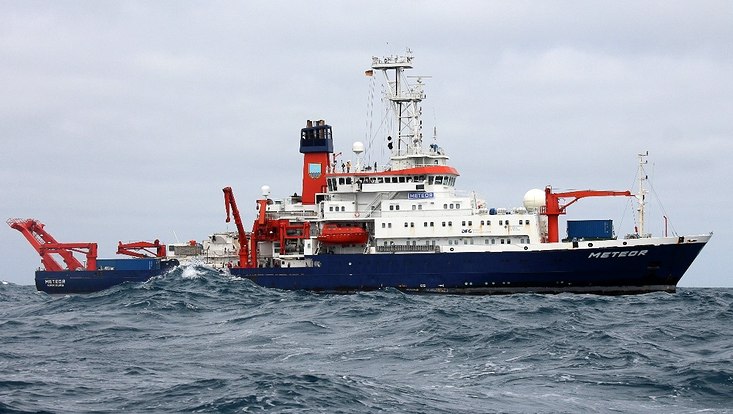Seafloor carbon storageIs the floor of the Baltic leaky?
21 November 2023, by Prof. Dr. Christian Hübscher

Photo: UHH/CEN/T. Wasilewski
In the future, what can we do with CO2 to ensure it doesn’t reach the atmosphere? One option is subterranean sequestration: CO2 is captured during industrial production, liquefied, transported to a suitable site and stored underground, preventing it from worsening global warming. In Europe, countries like Sweden and Estonia plan to use the floor of the Baltic for this purpose. During an expedition on board the Research Vessel METEOR, we assessed whether or not it was truly suitable.
Storms, heavy waves, and discussing the latest findings: conducting research on the high sea is anything but boring. My team and I from Universität Hamburg’s Center for Earth System Research and Sustainability traveled to the waters between Sweden and Latvia to determine whether or not CO2 could be safely stored below the seafloor.
We spent three weeks at sea, during which we took a range of readings. One tool we used: a multibeam echosounder, which scanned the seafloor with acoustic signals, allowing us to make detailed maps of it. We also used a device that’s a bit like the ultrasound machines you might see at your doctor’s. By emitting a signal toward the seafloor, we gained insights into its various layers, to a depth of more than 1,000 meters.

Scars of the ice age
Here, oil and gas fields that are hundreds of millions of years old lie below the seafloor. Oil and gas chiefly consist of hydrocarbons. We used our equipment to check whether any of these gases were being released by the ocean floor. Hydrocarbons exhibit the same type of behavior as CO2: once released, sooner or later the sequestered CO2 would also find its way into the atmosphere.
And lo and behold: our readings clearly identified a number of sites where gas was being released. As such, the seafloor here can’t be considered reliable as a storage site.
But why is the seafloor leaky? As our data shows: during the last ice age, icebergs plowed massive furrows in it, scraping away major portions of today’s seafloor, which left it porous. Today, hydrocarbons can penetrate the layer of loose sediment and reach the ocean. We can’t yet say how much is being released. What we can say: the bottom of the Baltic has too many leaks to be used for CO2 storage.
High-performance computers, motivated students
We had already surmised onboard that icebergs might be the culprit. Today, it only takes half a day to analyze the readings we take in the field – thanks to the ship’s cutting-edge computers and instruments, and of course to the highly motivated researchers and students on board. In the past, due in part to slower computers, we had to wait until we were back on shore to analyze our data.
During expeditions, we have meetings every day to discuss new findings and fresh ideas. It makes for a hectic atmosphere! And our students – who learn so much about scientific work and about life in general during the trips – are always right in the middle of it all. Soon we’ll depart for our next expedition to the Baltic. We still know very little about the seafloor in an area near Sweden; our team will remedy that.
More information
Prof. Dr. Christian Hübscher is a geophysicist and expert on subterranean storage sites. He works at Universität Hamburg’s Center for Earth System Research and Sustainability.
Guest piece: This article was originally published in the Hamburger Abendblatt as part of our monthly series on climate research. All articles in the series


